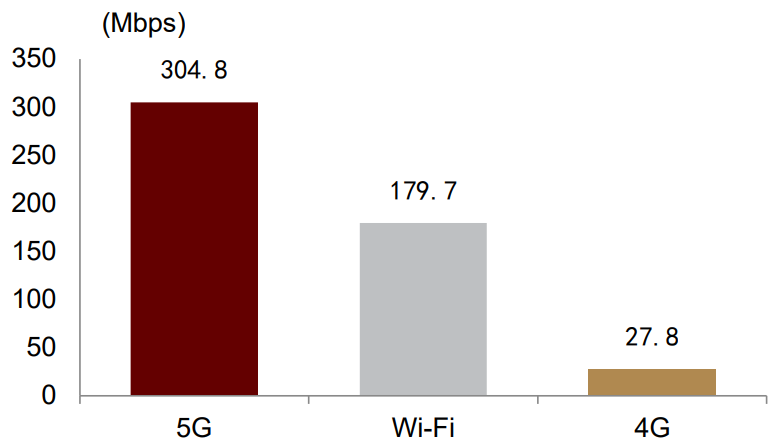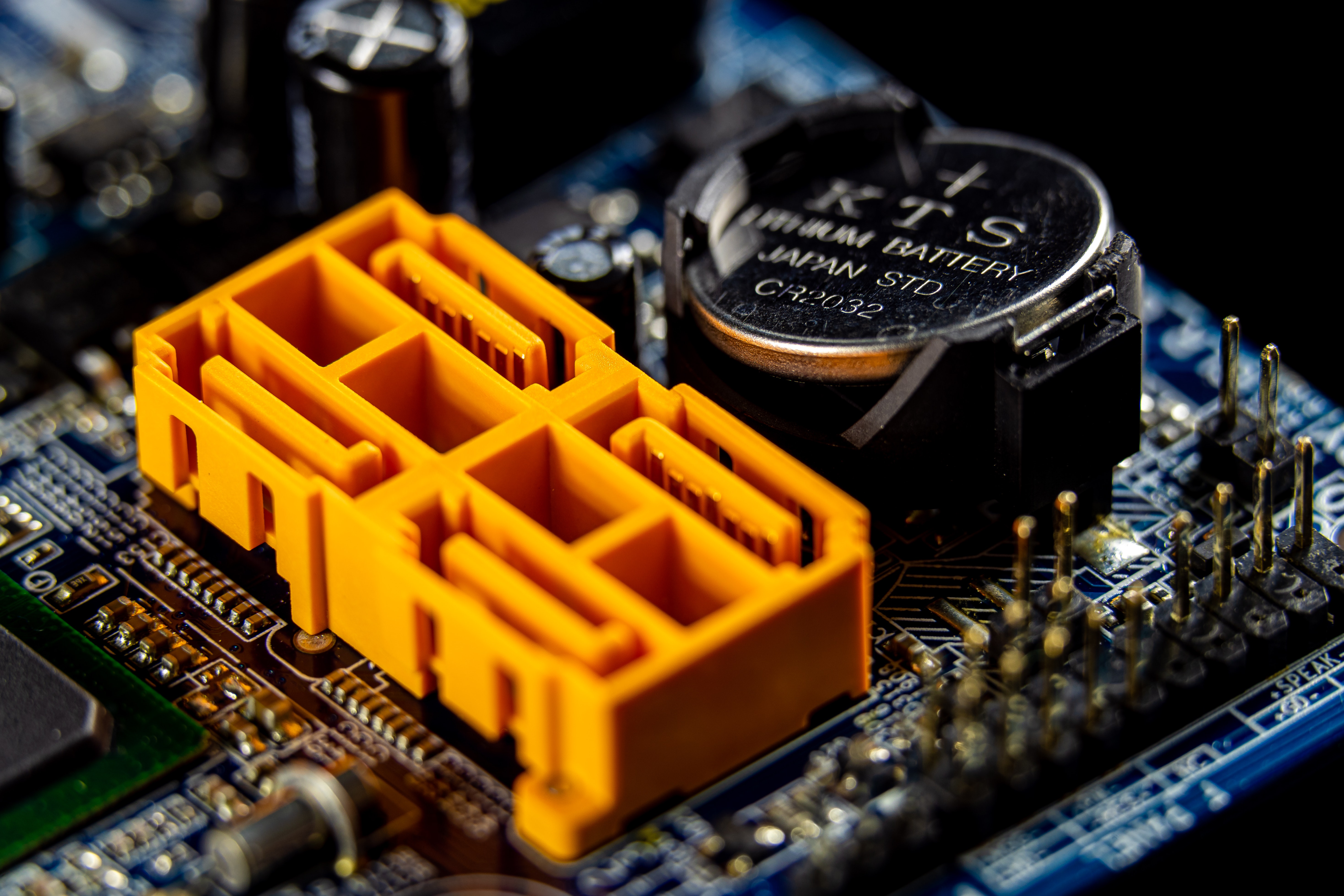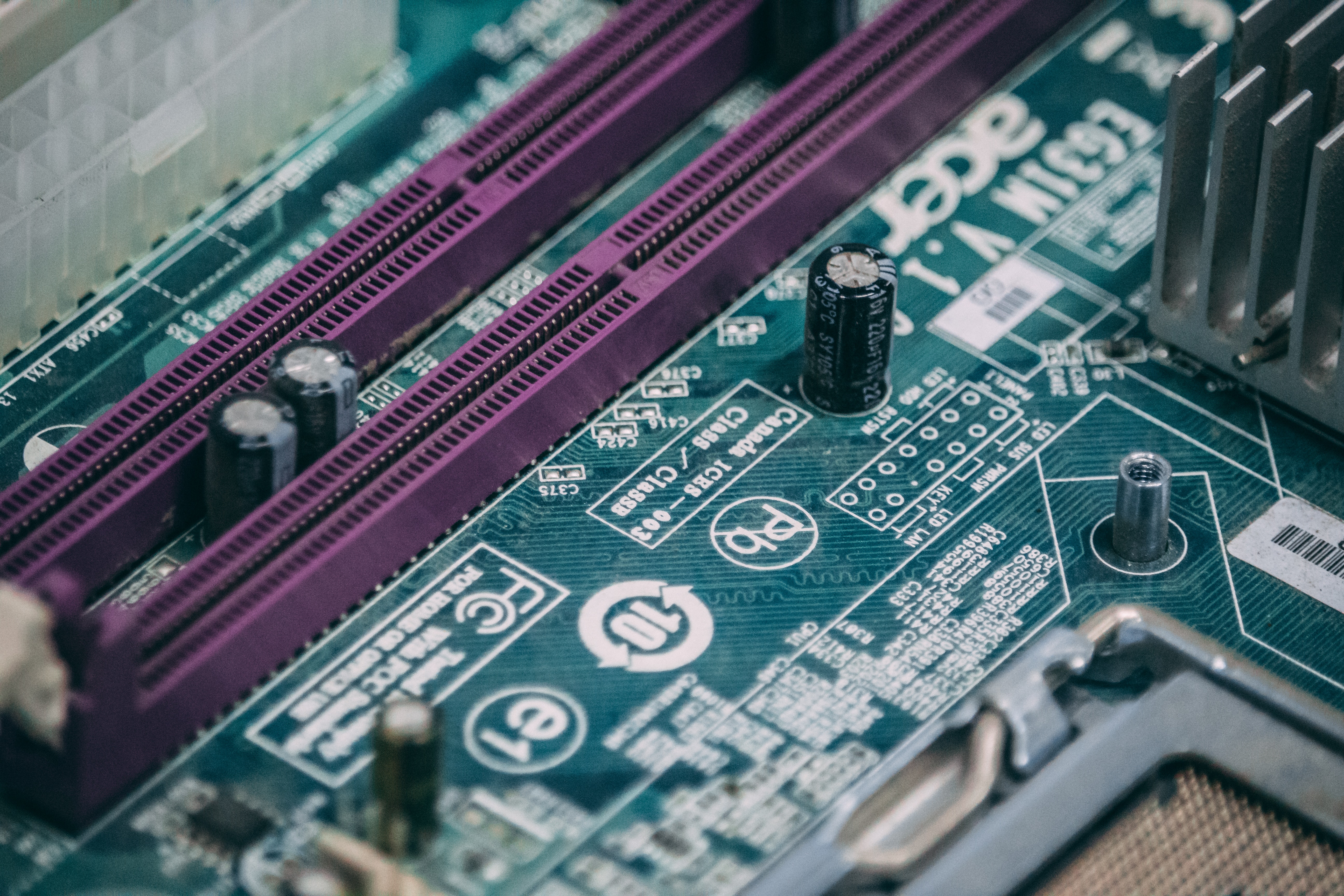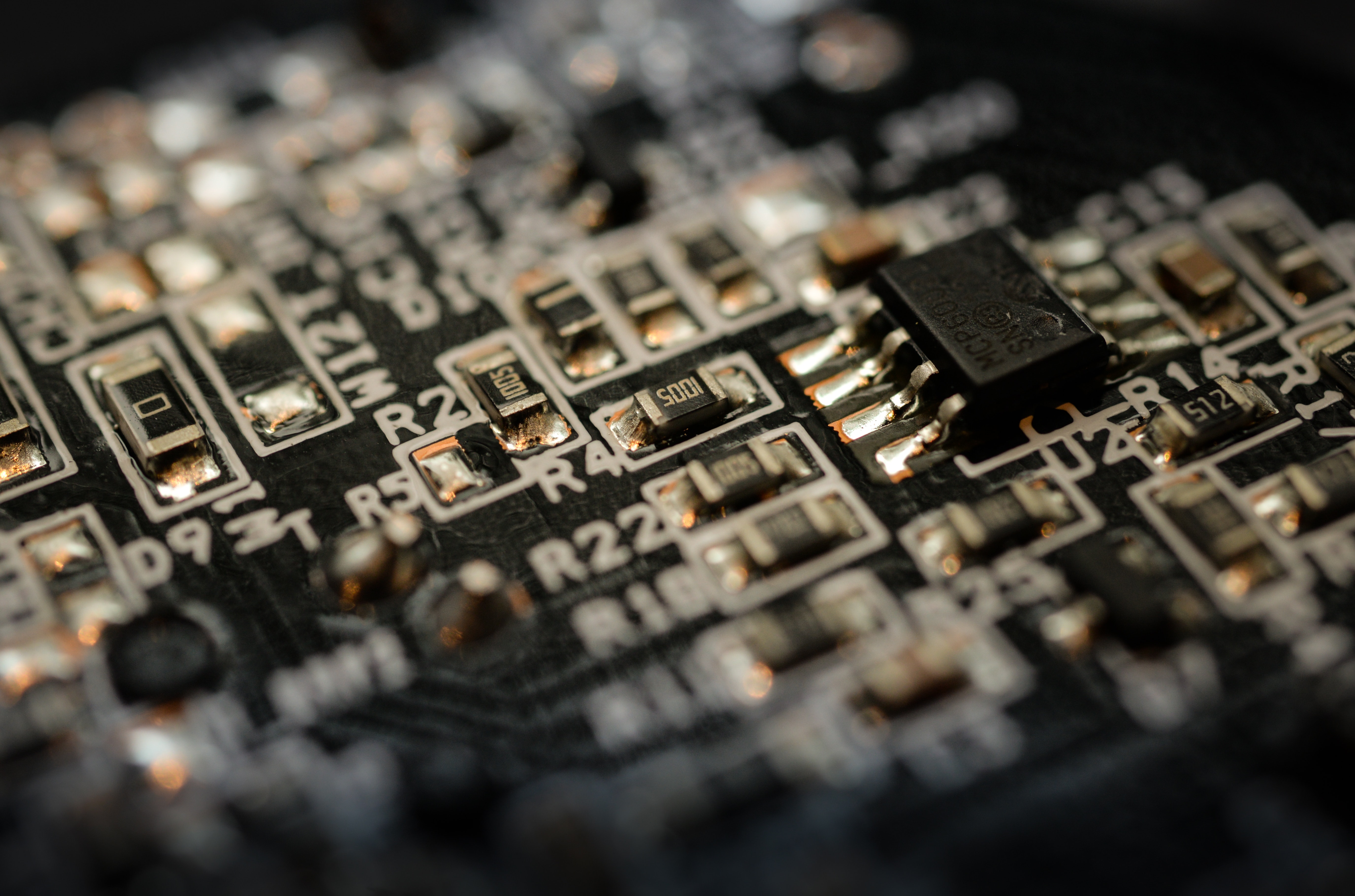Computing power networks are a key infrastructure for the construction of the digital economy. We define computing power networks as infrastructure that integrates cloud, network, and terminal resources to schedule computing power resources.
With the development of the digital economy, the rapid growth of data has led to the expansion of computing power scale. Computing power networks can schedule the uneven distribution of computing power resources across regions and provide computing power services directly through the network.
It can be considered that the construction of 5G networks has laid the underlying technical foundation for the integration of cloud and network in computing power networks. The construction of computing power networks can provide more flexible and low-cost computing power services for the development of the metaverse and vertical industry applications.

Computing power network is an important infrastructure in the early development of the metaverse, and it is also an important driver for the development of the digital economy.
From collaboration to integration, the Eastern Data and Western Computing initiative promotes the development of the computing network. The computing power network is divided into three layers in terms of architecture: infrastructure, orchestration management, and operation service layer. Among them, the orchestration management layer manages and controls the network scheduling downward, and provides a computing network scheduling capability interface upward, which is the key “brain” in the computing power network architecture.

Currently, the construction of the computing power network is transitioning from the initial stage of ubiquitous collaboration of infrastructure to the development stage of unified integration of computing and network resources, with the three major operators orderly advancing the construction of the computing power network.
The computing power network is a component of the new infrastructure, and the implementation of the “East Data, West Computing” policy will help with the national integrated scheduling of computing resources and the construction of infrastructure, laying a solid foundation for the construction of the computing power network.
The operators are leading, and multiple parties are participating to create an industrial ecosystem. The computing power network is an organic whole composed of multiple digital infrastructure industries.

The carrier is the leading participant in the computing power network industry chain and has an inherent advantage in building a computing power network ecosystem:
1) The carrier relies on network resources to seize the terminal connection entry point;
2) The high bandwidth, large connection, and low latency characteristics of the 5G network are the prerequisites for data transmission in the computing power network;
3) The carrier's own IDC and cloud computing layout provide infrastructure resources, and the layout of IDC in the west effectively reduces the cost of computing power.

4) The massive number of individual users and government and enterprise users of operators is the key entry point for promoting computing power services;
5) The industry chain is rich in resources, and it is necessary to coordinate the strength of multiple parties to promote the construction of the computing power network ecosystem.
Cloud computing and IDC manufacturers are also key participants in the computing power network industry chain.

Empowering the Metaverse and Vertical Industry Applications, Computing Power Drives Social Digital Transformation. The integrated service capabilities and technical advantages of the computing power network can solve the pain points of computing power demands in scenarios of the Metaverse and vertical industry applications.
As the computing power network moves towards the integration of computing and networking, it will be widely applied in various industries such as industry, energy, transportation, and construction, promoting the vigorous development of China's digital economy industry.
However, at present, the development of key technology research and development is not as expected; the development of downstream applications is also not as expected.

Chart 1: Framework Logic – Computing Power Network: A New Type of Information Infrastructure for the Digital Economy
01 Data becomes a new factor of production, and the computing power network emerges
Data is the new factor of production in the new era, and computing power is the rate at which equipment processes data. The rapid expansion of data volume drives a significant increase in the demand for computing power.
With the development of the digital economy, we are in an era of exponential data growth. Statista's statistics show that the global data volume was expected to be 47ZB in 2020 and is projected to reach 2,142 ZB by 2035.
William D. Nordhaus, the recipient of the 2018 Nobel Prize in Economics, defined computing power in his article “Computing Processes” as follows: “Computing power is the amount of information data that equipment can process per second based on changes in internal state.”
Computing power is a positive indicator used to measure a device's data processing capabilities, typically measured in the number of floating-point operations per second (Flops).
According to the “Three-Year Action Plan for the Development of New Data Centers (2021-2023)” by the Ministry of Industry and Information Technology, the total computing power of the country is expected to exceed 200 EFLOPS by the end of 2023.
01 The computing power network is a key infrastructure for the construction of the digital economy
The China Academy of Information and Communications Technology predicts that the global computing power scale will reach 3,300 EFLOPS by 2025, with a compound annual growth rate (CAGR) of over 50% from 2020 to 2025.

Chart 2: Global Data Volumes Exponentially Increasing

Chart 3: Global Computing Power Scale, 2016-2025E
“02 Collaborative Scheduling, Cost Reduction, Computing Power Network Aids Digital Construction”
“Currently, the Internet is entering a transitional period from Web2.0 to Web3.0”, the development of the metaverse is accompanied by the birth of new types of applications such as digital twins, smart cities, and virtual humans, “the development of the virtual world is accompanied by higher requirements for network transmission and computing.”
The current distribution of computing power supply and demand shows a decentralized and unbalanced characteristic, requiring the scheduling of a computing power network.
With the development of technologies such as 5G and AI, the interconnection of all things has become possible. Smart homes, smart cars, smart factories, and other types of terminals may all become devices that produce computing power, and the distribution of access devices shows a trend of decentralization and sinking.
In addition, the deployment of China's computing power resources is unbalanced, with a shortage of computing power supply in the developed eastern regions, while the IDC machine rooms in the resource-rich western regions have insufficient utilization rates. The development of the digital economy requires a network that can connect all types of devices, including cloud, edge, and terminals, for unified planning and allocation of computing power.
Chart 4: The Evolution of Computing Network Architecture from Cloud Computing to Ubiquitous Computing
In the era of the metaverse, the application of new technologies such as VR and AR is closely related to networks with high bandwidth and low latency. When we make video calls and click on web pages, a delay response of 100-200ms is still acceptable, but in 3A games, the same level of latency can cause players to feel lag, leading to a significant decrease in the experience.
According to Subspace's statistics, for every 10ms increase in game latency, the user's game time will decrease by 8%. The application of VR and AR technologies has also further expanded the bandwidth requirements. The application of computing power networks can directly schedule computing power resources for network access, providing cloud rendering to achieve low-latency high-definition video enjoyment.
Additionally, the computing power network can deploy large-scale computing resources to the western computing nodes, matching them with the eastern demands through direct connection channels, reducing the costs for businesses with lower requirements for latency. This promotes the popularization of commercial applications that require a large amount of computing power, such as AI and high-definition video.
Chart 5: VR and AR Requirements for Latency and Internet Speed (Single Device)
Chart 6: Real-time data of 5G cloud testing platform rates in the first quarter of 2022.
Computing power network investment drives economic output and has become an important driver of digital economic development.
According to the information disclosed by the Ministry of Industry and Information Technology at the 2022 China Computing Power Conference, in the past five years, the scale of China's core computing power industry has grown by more than 30% per year on average. By the end of 2021, the computing power scale ranked second in the world.
Among them, in 2020, the scale of China's computing power industry reached 2 trillion yuan, driving a direct economic output of 1.7 trillion yuan in servers, machine room equipment, etc., and indirectly driving an economic output of 6.3 trillion yuan through the efficiency improvement of productivity brought by computing resources.
According to the calculation of the China Academy of Information and Communications Technology, for every 1 yuan invested in the computing power network industry, it will drive an average of 3 to 4 yuan of GDP economic growth. In May 2022, the “Solid Measures to Stabilize the Economy” issued by the State Council once again mentioned the promotion of new infrastructure construction and the development of the digital economy.
The construction of computing power networks will become an important part of the transformation and development of the digital economy. Computing power networks are the key foundation for new infrastructure and digital economy construction.
03 Riding the 5G Wave, Preemptive Supply of Computing Power Networks
Looking back at the development history of 1-5G, the construction of basic network infrastructure has led to subsequent changes in communication media and productivity.
From the 1G to 4G era, the evolution of communication technology and the improvement of data transmission speeds have changed people's lifestyles and also promoted the innovation of business models for companies.
Network and communication infrastructure determine the rate of information interaction, which directly drives the improvement of production efficiency on this basis.

Chart 7: Main Transformations in the 1G-5G Era
The development of communication technology has always been ahead of the transformation of productivity, as seen from the evolution from 1G to 5G.
5G technology further increases the upper limit of wireless data transmission speed to over 1Gbps, making it possible for intelligent devices to connect with each other. It's not just about mobile phones, but also various wearable devices, furniture, cars, and even various machine equipment in factories can become a part of the communication network.

eMBB, uRLLC, and mMTC constitute the three major application scenarios of 5G, corresponding to enhanced mobile broadband, ultra-reliable low-latency communication, and massive machine-type communication, respectively.
Among them, eMBB corresponds to mobile phone communication, while uRLLC and mMTC further expand the B-side industry internet application scenarios, such as industrial internet, connected vehicles, and other vertical industry scenarios, providing the technical foundation for data transmission for future smart manufacturing.
Therefore, to achieve a substantial transformation of future production relations, it is necessary to first complete the construction of the underlying computing power network.
The 5G network, with the help of virtualization technology NFV, fully uploads the core network to the cloud, laying a foundational architectural basis for the integration of cloud and network.
NFV technology applies standardized network functions to unified standard hardware devices, changing the original strong binding relationship between software and hardware in network equipment. After the decoupling of software and hardware, the core network network functions can be flexibly deployed on public clouds, private clouds, and hybrid clouds.
This cloud-native architecture has achieved the first stage requirements of “cloud-network integration” – that is, cloud-network resource layout can be flexibly docked and unified managed.
In addition, the 5G core network has a service-oriented architecture, separation of control and bearing, slicing, and fixed-mobile convergence, among other characteristics, which has laid the foundation for the subsequent construction of the computing power network.
01 Computing Power Network Architecture and Key Technologies: From Infrastructure to Computing Power Services
The architecture of the computing power network can be divided into three layers, from bottom to top, which are the infrastructure, orchestration management, and operation service layers.
The infrastructure layer is an organic combination of “computing” and “networking” resources. It is composed of various distributed computing resources and underlying networks.
Among the key technologies of the infrastructure layer, Optical Transport Network (OTN) can provide high-bandwidth and high-speed data transmission; SRv6 can enhance network flexibility and enable network programmability. In addition, it also includes technologies such as edge computing and cloud-native.

The orchestration management layer is the core management hub of the entire computing power network. The main functions that need to be implemented by the orchestration management layer include:
1) Managing the computing power resources of the infrastructure layer, carrying out measurement, perception, identification, and output of computing power;
2) Controlling network scheduling to achieve multi-dimensional connection, addressing, and allocation of computing power and network resources;
3) Providing a computing network scheduling capability interface for the operation service layer. Among the core technologies of the orchestration management layer, OpenStack and K8s assist in the unified management of computing network resources.
Container technology enables flexible resource scheduling, in addition, technologies such as deep learning and big data can be orchestrated and scheduled.
► The operation service layer provides a one-stop supply of products and services.
The computing power operation service layer is the top layer of the computing power network, achieving the encapsulation and operation of computing network resources, and combining blockchain technology to create a trading service platform for social computing power resources.
Customers only need to focus on the services they ultimately receive, without considering the location and status of computing power deployment, achieving seamless intelligent services. Core technologies include blockchain, computing power trading, and computing power encapsulation.
In addition to the three-layer architecture of the computing power network, it is also necessary to have security technologies to protect the data security throughout the process, and green energy-saving technologies to reduce the energy consumption of the entire computing power network operation.
02 Moving from collaboration to integration, utilizing both Eastern and Western approaches to drive the development of the computing network
Chart 8: Computing Power Network Architecture
Chart 9: Key Technologies of Computing Power Networks

02 Development Stages of Computing Power Networks: From Computing and Networking Collaboration to Symbiotic Integration
According to the classification by China Mobile in the book “Computing Power Networks,” the construction of computing power networks can be divided into three stages: initial, development, and leapfrog.
► Initial Stage (2021-2022): Ubiquitous Collaboration between Computing and Networking.

The core objective of this phase is to optimize the layout of the computing power network infrastructure and achieve the integration and collaboration of cloud computing and network resources.
In this phase, the computing and network facilities of the orchestration management layer and the infrastructure layer are still independent of each other. However, they can achieve a unified product output to the customer layer through resource collaboration.

► Development Stage (Estimated 2023-2027): Unified Integration of Computing and Networking
In this stage, computing and networking will initially integrate at the infrastructure layer, breaking the independent situation between them. Unified management, orchestration, scheduling, and maintenance will be achieved at the orchestration management layer, and integrated services will continue to be provided at the service layer.
During this stage, computing and networking will gradually converge in terms of logical architecture, with resource management and service scheduling integrating with each other to produce a truly meaningful “computing and networking product”. This stage is a critical phase in the development of the computing power network, determining the final effect of the “symbiotic unity”.
► Transcendence Phase (Expected 2028-2030): Symbiosis of Computing and Networking
This is the ultimate goal of the computing power network, achieving complete symbiosis of computing and networking in terms of protocols and forms, breaking through technical boundaries. From the user's perspective, storage, computing, and networking are converging, allowing users to directly utilize multi-level, unified computing resources.
Chart 10: Development Stages of Computing Power Networks and the Current Construction Status of Various Operators
We believe that the current construction progress of the computing power network is still in the process of moving from the initial stage to the development stage.
At present, the construction of the computing power network by the three major operators is progressing in an orderly manner. For example, China Telecom announced at the Digital China Construction Summit that it has entered the 3.0 era of cloud-network integration, emphasizing the aggregation of elements, and achieving a new form of cloud-network integration at the infrastructure level.
China Mobile released the Computing Network Service 1.0 at the 2022 China Computing Power Conference and is actively helping to build a unified international standard system for computing power networks.
03 New Infrastructure and Eastern Data and Western Computing Promote the Development of Computing Networks
With the vigorous development of China's digital economy, the demand for digital transmission and other aspects has further expanded, and computing networks will become the infrastructure for the construction of the new generation of digital economy.
In April 2020, the National Development and Reform Commission first explained the meaning of “new infrastructure”, with computing infrastructure represented by data centers and intelligent computing centers belonging to information infrastructure, encouraging localities to actively deploy and accelerate the construction progress.
Chart 11: Overview of National Policies Related to Computing Power Networks

In response to the current situation of uneven distribution of computing power, the “Eastern Data and Western Computing” initiative promotes the integration of computing and network resources.
In May 2021, the National Development and Reform Commission and three other departments issued the “National Integrated Large Data Center Collaborative Innovation System Computing Hub Implementation Plan”, proposing to lay out eight national computing network hubs in the Beijing-Tianjin-Hebei region, the Yangtze River Delta, the Guangdong-Hong Kong-Macao Greater Bay Area, Chengdu-Chongqing, Guizhou, Inner Mongolia, Gansu, and Ningxia.
In addition, the “Plan” also mentions the requirements of “network integration” and “computing power integration,” calling for the construction of a high-speed direct connection network for data centers.
This direct connection network is used to support large-scale computing power scheduling, promoting resource collaboration between multiple clouds, between clouds and data centers, and between clouds and networks. This indicates that the “computing power network” has been included in the development scope of the country's new infrastructure construction.
The implementation of the “Eastern Data and Western Computing” policy can effectively address the issue of unbalanced regional distribution of computing resources. By establishing direct connection channels, it matches the demand from the eastern regions with the computing resources in the west, achieving coordinated scheduling of computing power and data.
The Eastern Data and Western Computing project is a key preliminary step in the construction of the computing power network. It can achieve integrated planning and rational scheduling of the country's computing power, network, data, and energy, laying a solid foundation for subsequent integration of computing and networking as well as industrial services.
“04 Operator-led, multi-party participation in creating an industrial ecosystem”
The computing power network is an organic whole composed of multiple digital infrastructure industries. Operators are the leading participants in the computing power network industry chain, working together with upstream and downstream cloud vendors, IDC manufacturers and many other participants to build a new type of underlying infrastructure for the digital economy.

Chart 12: Computing Power Network Industry Chain
05 Operators: Leading the construction of the computing power network ecosystem
We believe that operators have a natural advantage in building a computing power network ecosystem, mainly reflected in the following points:
1) Connectivity, the operator's network has access to a large number of terminals with a wide variety of devices, such as mobile phones, computers, wearable devices, VR/AR devices, smart home, Internet of Things terminal devices, etc. Operators rely on network resources to seize the terminal connection entry point.
2) In terms of transmission, the 5G network has characteristics of high bandwidth, large connections, and low latency, which can serve as the prerequisite for data transmission in the computing power network.
3) In terms of computing power resources, the number of available resource pools and the scale of cloud computing power of the operator's IDC are leading in China compared to other third-party data center manufacturers. At the same time, the layout of IDC resources in the western region is complete, which can provide large-scale computing power while effectively reducing costs for customers.
4) Market Aspect, operators have a vast number of individual users and government and enterprise users, and the extensive customer resources are the entry point for operators to promote computing power services.
5) Ecosystem Aspect, operators have rich industrial chain resources, and can coordinate and integrate the strength of multiple participants in the industrial chain, such as communication equipment manufacturers, terminal equipment manufacturers, cloud service providers, and software service providers, to create a computing power network ecosystem.
Based on the existing unique advantages, the three major operators can build a computing power network from four dimensions of “network”, “computing power”, “commercial services”, and “ecosystem”.

“Network” – Technological Improvements, Optimizing Network Infrastructure
Operators are accelerating the upgrade of 5G network technology and optimizing the computing power network infrastructure. The ultimate goal of the computing power network is to meet the cloud needs of various industries, providing differentiated and high-quality services. This requires its underlying network, that is, the 5G network, to be able to flexibly adapt to the diverse business needs with a single network.
At present, operators are accelerating the construction of a new generation of information infrastructure represented by 5G. According to data from the Ministry of Industry and Information Technology, as of the end of June 2022, a total of 1.854 million 5G base stations have been built nationwide, which have been widely covered in all cities, county towns, and more than 90% of the townships; fixed broadband has made a leap from hundreds of megabits to thousands of megabits, and the proportion of fiber optic users has increased from less than 10% in 2012 to 95.2% at the end of June 2022.
How can a single network meet the diverse requirements for network performance in different application scenarios? The best solution is 5G network slicing.
Network slicing can transform the original single physical network into multiple independent virtual logical networks, each corresponding to different performance and application scenarios, similar to turning an ordinary knife into a multi-functional Swiss Army knife.
And a sub-network can be further divided, for example, eMBB slices can be further divided into virtual reality sub-slices, smartphone sub-slices, etc. Operators have also developed new business models, creating network slice functions, and renting virtual networks with different performance to service providers engaged in different businesses. The slices can also be revoked after use, thereby significantly improving resource utilization and network flexibility.
Chart 13: Key 5G Technology – Network Slicing
The 5G network is divided into the access network, the transport network, and the core network, and the implementation of network slicing requires the cooperation of all three parts.
The access network is the nerve endings, serving as the connection for all types of terminals. For example, it can use base stations for wireless access and optical fibers for wired access;
The transport network is the nervous system, mainly using optical fibers for data transmission and scheduling between the access network and the core network;
The core network is the brain, composed of various network elements with different functions, managing and controlling various services.
In the era of 5G, key technological innovations have been made in each component of the 5G network to continuously meet the needs of innovative services.

Chart 14: Basic Composition of 5G Mobile Communication Networks

“Computing Power Resources” – The three major operators combine infrastructure layout with computing network
The three major operators are not only builders of the underlying network but also important providers of computing power resources.
According to data from the Prospect Industry Research Academy, in 2020, telecom operators accounted for nearly 50% of the IDC market share.

The layout of operators' IDC resources is highly consistent with the layout of the national “Eastern Data and Western Computing” hub nodes. By securing scarce computing resources in first-tier cities and building ultra-large data centers in the western region, the leading layout advantage, combined with the increased shelf rate of data centers in the west brought by the Eastern Data and Western Computing policy, operators are expected to enjoy a longer dividend harvesting period compared to third-party data centers.
Chart 15: The layout of carrier IDC resources is highly consistent with the layout of the Eastern Data and Western Computing hub nodes, with data as of the end of 2021.
China Mobile: According to the company's “China Mobile Computing Power Network White Paper” released in 2021, the company will focus on computing power and take the network as the foundation. The goal is to create a computing power network that integrates multiple elements such as network, cloud, data, intelligence, security, edge, terminal, and chain (ABCDNETS), ultimately achieving “ubiquitous computing power, symbiosis of computing and network, intelligent orchestration, and integrated services.”
In terms of the layout of computing power resources, according to the company's announcement data, the company has planned a “4+3+X” data center layout and built an “N+31+X” cloud resource pool system, reserving many site resources for edge access.
As of the end of 2021, China Mobile has 407,000 IDC racks available for external use, with a cumulative production of more than 480,000 cloud servers; in 2022, China Mobile's computing power network capital expenditure is expected to reach 48 billion yuan, and the company is expected to add about 43,000 new racks available for external use and more than 180,000 new cloud servers.
Chart 16: China Telecom's Cloud-Network Integration Target Technology Architecture
Chart 17: China Unicom Computing Network Architecture
China Telecom: The company continues to deepen its cloud-network integration strategy, aiming to form an integrated technical architecture through virtualization, cloudification, and service-oriented approaches, ultimately achieving a resource supply of a new type of cloud-network integration infrastructure that is simple, agile, open, integrated, secure, and intelligent.
In terms of computing resource layout, according to the company's announcement data, China Telecom has constructed an integrated layout of cloud and IDC resources with “2+4+31+X+O”.
By the end of 2021, the company had more than 700 data centers, providing a service rack scale of 470,000 racks, with a computing power scale of 2.1 EFLOPS.
China Telecom's IDC capital expenditure plan for 2022 is 6.5 billion yuan, and the company is expected to add about 45,000 new available racks; the cloud resource plan capital expenditure is 14 billion yuan, and it is expected to add 160,000 new cloud servers, with the computing power scale increasing by about 81% by the end of 2022 to 3.8 EFLOPS.
► China Unicom: The company has built a CUBE-Net3.0 network innovation system, and with this target architecture, China Unicom has set up a “5+4+31+X” new type of data center, creating an integrated service of “connection + perception + calculation + intelligence”.
In terms of the layout of computing resources, according to the company's announcement data, as of February 2022, China Unicom has more than 880 existing data centers, with a total scale of over 300,000 racks, carrying more than a million servers. The data centers are mainly distributed in the regions of Jing-Jin-Ji, Yangtze River Delta, Pearl River Delta, Lu-Yu, Sichuan-Shaanxi-Chongqing, Inner Mongolia-Guizhou, etc.
“Commercial Products” – Rich Industry Solutions
The computing power services launched by operators have become the first step towards the commercial development of the computing power network. At present, both China Telecom and China Mobile have released commercial computing power service products.
Taking the product of China Telecom as an example, on July 12th, Shanghai Telecom released the first public computing service product of an operator, which is based on the superior resources of China Telecom's Tianyi Cloud, providing multiple types of services such as general computing power, intelligent computing power, and supercomputing power. It supports the real-time, flexible scheduling capabilities of the computing power network across regions, achieving integrated operation services of computing power, network, and storage resources.
The launch of the operator's commercial computing service product is an important progress in the construction of the computing power network. By directly providing customers with efficient and flexible computing power support, it promotes innovation in industry solutions, achieves the integration of its own cloud, network, and computing resources, and expands the scale of digital business.
Chart 18: Introduction to Shanghai Telecom's Public Computing Power Service Products
With the expansion of computing power resources and the gradual enrichment of computing power services, we believe that a trading platform for integrating computing power resources will become a new business model for the computing power network.
Considering that computing power resources are more complex in structure compared to water and electricity, technologies such as blockchain and AI will become key technologies for the trading platform.
The computing power trading platform can gather fragmented computing power distributed in various regions, promote the circulation of idle computing power between different regions and service providers, achieve on-demand distribution and fair pricing of computing power, and at the same time lower the threshold for enterprises to use computing power services.
“Ecology” – Leading the joint construction for mutual benefit and win-win results
Telecom operators, with their advantages in cloud and network resources, have become the most critical link in the computing power network industry chain. They should actively explore opportunities for industrial chain cooperation and take the lead in creating a win-win ecosystem.
► On the underlying resources of the computing power network, the construction of a computing power network for the whole society still requires the introduction of partners from all walks of life
Such as cloud vendors and IDC vendors as infrastructure, and third-party service providers providing vertical industry services, etc.

Telecom operators provide cloud and network resources, connecting various links in the industry chain through the network. They play a key role as “dispatchers” in the computing power network, identifying the computing power needs of downstream customers, and scheduling computing power resources in real-time at different locations according to demand. This enables the automated deployment of services, optimal routing, and load balancing.
► In the field of computing power network application services, operators can join hands with industry partners to continue to deepen cooperation around the technological transformation of computing power networks and vertical field solutions, jointly develop products, share technical experience, and explore more innovative applications of computing power networks in various industries such as manufacturing, transportation, medical care, education, ports, etc.
In addition, operators actively promote the construction of a unified international standard system related to computing power networks, laying the foundation for future multi-platform and multi-vendor capability sharing.
For example, China Mobile, in conjunction with 26 units from industry, academia, and research, has made technical breakthroughs in several directions such as computing power routing and native computing power, and has promoted the construction of international standard systems such as ITU/IETF.

“Operators promoting the construction of a unified computing power network standard system helps to build a unified and universal computing power ecosystem, enhancing the influence of enterprises.”
06 Cloud Vendors: Important Participants with Cloud Resources and Technical Advantages
Cloud computing vendors are important participants in the computing power network, and by leveraging their existing cloud computing resources and technical advantages, they can participate in the construction of the computing power network at multiple levels, including infrastructure, cloud network services, and security management.
Cloud computing vendors are the main providers of public cloud computing resources and cloud technology, and are important suppliers of computing infrastructure.
According to the data released by IDC on the China public cloud IaaS+PaaS market in the second half of 2021, Alibaba Cloud, Huawei Cloud, and Tencent Cloud successively occupy the top three positions in market share, with a combined share exceeding 60%.
In addition, Internet manufacturers have been active in the field of cloud computing earlier, combining the advantages of cloud computing technology with the advantages of transmission and scheduling of computing power networks, which can provide customers with a better quality of service experience.

Chart 19: China Public Cloud IaaS + PaaS Market Share, H2 2021
Chart 20: Tencent Cloud Integrated Computing Infrastructure

In cooperation with carriers, cloud network products are launched to serve corporate customers. Cloud vendors can provide cloud direct lines, cloud VPNs, 5G cloud direct lines, and other products to customers by renting bandwidth from carriers and using technologies such as SD-WAN and dedicated lines.
Taking Tencent Cloud's 5G cloud direct line as an example, it cooperates with carriers to use Tencent TSAC (Edge Access and Acceleration Platform) in the core network to connect with the carrier's core network UPF gateway, directly scheduling the carrier's core network resources, ensuring the reliability of cloud direct line services, and achieving a high degree of integration between cloud computing and 5G network technology.
In the future, as the development of the computing power network continues to mature, cloud vendors can act as enablers of underlying cloud computing infrastructure and technology resources, participating in the construction of the computing power network system.

07 IDC Vendors: Eastern Data and Western Computing Drive Optimization of Computing Power Layout
IDC vendors are important participants in the infrastructure layer of the computing power network, providing rental services for various distributed computing resources. IDC vendors mainly focus on the development directions of Eastern Data and Western Computing, green and low-carbon, and integrated computing and networking in the construction process of the computing power network.
The layout of computing power resources and revenue performance of IDC vendors are showing a good growth trend.
Chinese IDC vendors continue to increase the layout of computing power resources. According to data from the Ministry of Industry and Information Technology, the scale of China's data centers is growing steadily. Based on the standard rack of 2.5kW, by the end of 2021, the scale of data center racks in use in China reached 5.2 million, with a compound annual growth rate of 33.03% over the past five years.
Driven by the vast demand for computing power in the digital economy era, the revenue of China's data centers has continued to grow rapidly.
According to data from the China Academy of Information and Communications Technology, in 2021, the market revenue of China's data center industry reached 150.02 billion yuan, with a compound annual growth rate of 30.69% in the past three years. We believe that the rapid growth of IDC manufacturers has confirmed the expansion of the market's demand for computing resources.

Chart 21: Data Center Rack Scale in Our Country
Chart 22: The Market Size of Data Centers in Our Country
Under the strategy of “Eastern Data and Western Computing,” the western regions will take on some of the computing demands from the eastern regions.
The domestic data centers will have a more distinct demand stratification. Data centers in the eastern regions, which are closer to cities, will be responsible for low-latency services such as industrial internet, AI inference, and edge computing. Meanwhile, the efficiency of the utilization of computing resources and green energy in the western regions will significantly improve under the aggregation of demands, serving large computing scenarios such as algorithm analysis, video rendering, supercomputing, and storage backup.
The layout of “Eastern Data and Western Computing” fully leverages the unique advantages of data centers in the eastern and western regions, and highly aligns with the requirements of the computing network for the optimized layout of IDC (Internet Data Center).
Green and low-carbon development is an essential path for IDC
The policy of “Eastern Data and Western Computing” requires the PUE (Power Usage Effectiveness) of the four western regions (Guizhou, Inner Mongolia, Gansu, Ningxia) to be below 1.2, and the PUE of the four eastern regions (Beijing-Tianjin-Hebei, Yangtze River Delta, Guangdong-Hong Kong-Macao Greater Bay Area, Chengdu-Chongqing) to be below 1.25. According to data from ODCC, the current PUE levels in all regions are higher than the requirements of Eastern Data and Western Computing, and there is still a large room for energy saving.
In addition, IDC manufacturers are also actively addressing their high-energy consumption problems by optimizing energy consumption through technologies such as liquid cooling and AI energy efficiency management to improve efficiency.
Policy support and technological innovation will effectively promote the evolution of data centers towards green and energy-saving, helping to build a green computing power network.
Chart 23: Average PUE of Data Centers in Various Regions Nationwide and the Requirements of the “Eastern Data and Western Computing” Initiative, 2021

Integrated Computing Network. In the early stages, the computing power network mainly focused on the collaboration of the computing network, and it will eventually evolve towards an integrated computing network phase.
In the future, the computing power network will be able to coordinate the computation, storage, and transmission of multi-dimensional resources in data centers, providing efficient, flexible, and professional services for upper-layer applications, achieving optimal utilization of computing resources, optimal network efficiency, and optimal user experience.

01 Metaverse
Computing power networks will serve as an important infrastructure to empower the metaverse.
Entering the era of the metaverse, the popularity of VR and AR will make the transmission of high-definition videos a widespread demand. The extensive application of technologies such as virtual humans and real-time rendering will also further increase the demand for computing power of heterogeneous computing power such as GPUs.
High-definition VR and AR videos in the metaverse have the typical characteristics of large data and high speed. In the application scenarios of metaverse videos, computing power networks can achieve the following functions:
1) Scheduling heterogeneous computing resources to meet real-time rendering in the cloud, reducing the hardware requirements of C-end devices;
2) High-bandwidth network access ensures a smooth experience for multiple users;
3) Using edge nodes to complete distribution and partial rendering needs, reducing operational latency and improving user experience.
Currently, computing networks have been applied in fields such as live video and high-definition video, and we believe that the relevant capabilities can continue to be further promoted in the metaverse scenario.
Chart 24: Schematic diagram of the application of computing power networks in the field of live video streaming.
02 Intelligent Driving
The low latency, high bandwidth, and cloud-edge collaboration capabilities of the computing power network provide key technical support for real-time data computation in intelligent driving.
In the era of vehicle networking, smart driving, as one of the most typical applications in high bandwidth, low latency, and high-reliability scenarios, is driving the transformation of the traditional automotive market.
Autonomous driving has created a huge demand for data transmission. According to Google's tests, the amount of data generated by a vehicle per second can reach 1GB.
Considering driving safety, autonomous driving imposes strict requirements on the stability and latency of data transmission. The ultra-low latency, high bandwidth, and cloud-edge collaboration capabilities of the computing network provide critical support for real-time control signals such as vehicle steering, acceleration, and braking.

In intelligent driving, the computing power network can provide high-bandwidth and low-latency networks for vehicles and road infrastructure, as well as computing services with edge computing capabilities. The data generated by vehicle operation is preliminarily processed at nearby edge nodes, uploaded to the cloud, and then returned. It is connected with the data of traffic systems such as lamp poles and traffic lights in smart cities. After analysis in the cloud, it provides driving information for vehicles.
Chart 25: Vehicle networking scenarios with cloud, edge, and terminal collaboration.
03 Wireless Medical
The computing power network is expected to continue to empower the upgrade and extension of wireless medical scenarios.
Based on key technologies such as 5G, artificial intelligence, and cloud computing, wireless medical can make full use of limited medical manpower and equipment, breaking the bottleneck of insufficient medical resources and uneven development in various regions, providing information-based, mobile, and remote medical services in disease diagnosis, medical monitoring, and surgical treatment, etc.
In the application scenarios of wireless medical, all tasks have high requirements for data transmission and connection speed.
Based on AI and haptic feedback, remote ultrasound theoretically requires a data rate of 30Mbps and a maximum latency of 10ms. The computing power network can support the needs for low latency and high bandwidth:
1) For remote surgery, in terms of video and image transmission, the low-latency computing power network can ensure the quality of image transmission, meeting the real-time high-definition transmission requirements for precise operations; in terms of surgical commands, the low-latency computing power network improves the accuracy of command issuance on one side and the timeliness of command response on the other side;
2) For remote diagnosis, the support of the computing power network can solve the problems of video networks being limited by bandwidth and network latency during the diagnosis and treatment process. It can complete the integration of remote auxiliary diagnosis and consultation operations between hospitals, and achieve remote operation and real-time diagnosis and treatment guidance.
03 Empowering the metaverse and vertical industry applications: computing power drives the digital transformation of society
“► 3) For emergency medical resource coordination, the computing power network can process complex emergency information in a timely manner and plan and allocate emergency medical resources in real time. It supports the real-time remote dispatch of emergency vehicles and personnel, and the timely updating of emergency patient information and status, striving to save precious time for life-saving efforts.”

Chart 26: Wireless Medical Network Logical Architecture
Risk Warning
Key Technology Research and Development May Not Meet Expectations.
Currently, the construction of computing power networks is in the early stages of development. Technologies such as computing power orchestration, scheduling, and computing power-aware networking are still in the early stages of research and development, requiring relevant companies to invest more resources.
To achieve unified scheduling and load optimization across regions, cloud-edge terminals, and types of computing power, there is still uncertainty in technological research and development. If key technology research and development does not meet expectations, it will affect the overall progress of the construction of computing power networks.
Downstream Application Development Falls Short of Expectations.
Currently, there are few commercial applications of the metaverse, and the demand for large-scale computing power is limited. Considering that the development of downstream industry applications requires comprehensive support from chips, AI, software and hardware, etc., the development of downstream applications may lead to the commercial development of the current computing power network falling short of expectations.









